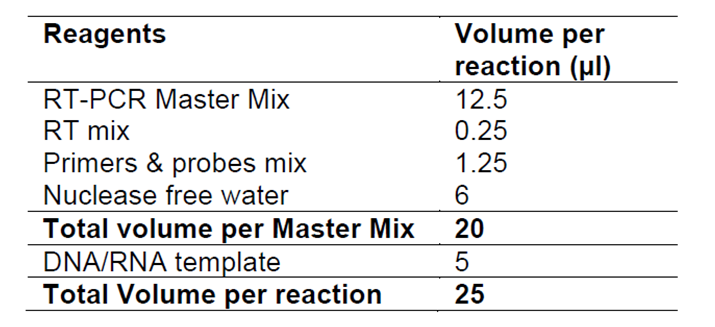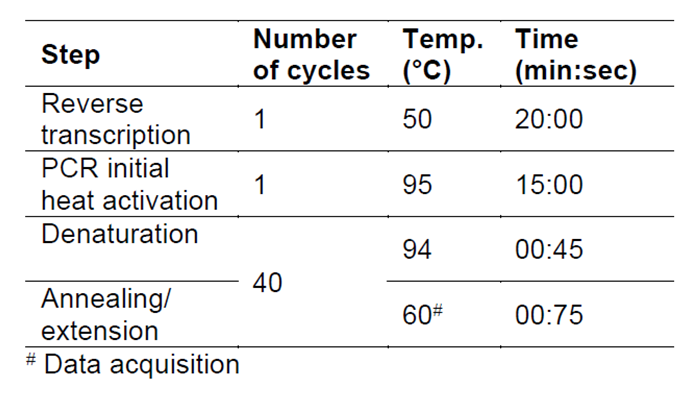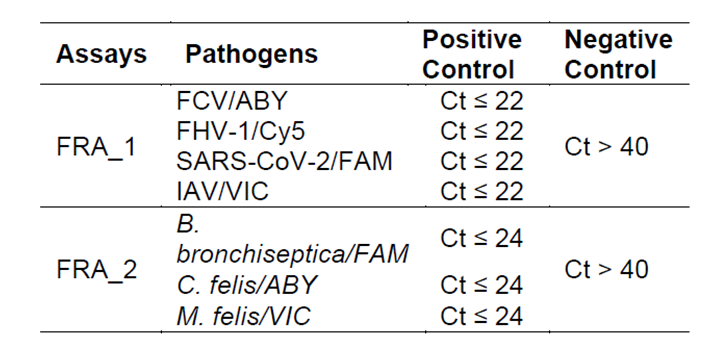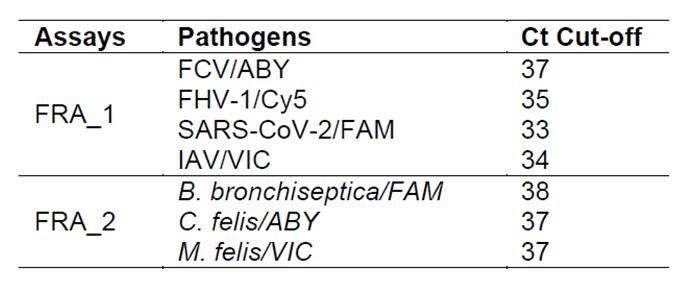Feline Respiratory Pathogen Detection Assays
Come J Thieulent, Mariano Carossino, Laura Peak, Udeni B. R. Balasuriya
Disclaimer
Reference to any commercial materials, equipment, or process does not in any way constitute approval, endorsement, or recommendation by the Food and Drug Administration.
Abstract
The Feline Respiratory Pathogen (FRP) Detection Assays is intended as an in vitro veterinary reagent set, based on quantitative PCR (qPCR) and Reverse Transcription qPCR (RT-qPCR), for the detection of feline calicivirus (FCV), feline herpesvirus type 1 (FHV-1), influenza A virus (IAV), SARS-CoV-2, Bordetella bronchiseptica , Mycoplasma felis and Chlamydia felis in nasal and pharyngeal swab samples.
Steps
Thaw all reagents on ice.
Centrifuge all reagents on a benchtop centrifuge to ensure no liquid is in cap and keep on ice
PROGRAMMING THE THERMOCYCLER
Select the following fluorescence channels: ABYTM, Cy5, FAMTM, and VICTM.
RESULTS INTERPRETATION
Before analysis of results, the threshold value of each fluorescent dye must be manually set in the region of exponential amplification, typically 0.1 × ΔRn value at the plateau phase.





